Table of Contents
Remembering Johnny Cash (1932-2003)
The wild life of Johnny Cash: drugs, a historic concert in prison and the loss of a love he couldn’t stand.

On September 12, 2003, Johnny Cash died. He was 71 years old and his career had been revitalized recently. The great love with June Carter. His addictions and his problems with the law. The day a forest fire started. Why they called him “The Man in Black”?
Hello, I’m Johnny Cash. This is how he presented himself to the public in each of his recitals. The custom was born in their first performances, multiple festivals, collective concerts, in which people did not know very well those who stood in front of the microphone. Then he became a superstar . But the custom did not lose her. The deep, hollow and resonant voice, the guitar and his songs of losers, defeated, desperate, marginalized and outcasts would do the rest. The threatening pose, the danger translated into his throat and a handful of verses.

He could have, when appearing in front of the public, said that he was The Man in Black , they would have also recognized him. It had been the title of one of his albums, that name was more than a nickname, it illustrated his monochromatic way of dressing and also described the humor that inhabited his songs and also in his own life.
Best Sheet Music download from our Library.
Johnny Cash became a myth long before his death. He triumphed in three different genres: country, gospel and rock (he is a member of the Hall of Fame of all three genres). He sold more than 90 million records. But his legend is much bigger than the story of his fluctuating career. There are songs, of course, but also danger, illegality, an indelible love, infidelities, excesses, problems with the police, rebellion until the last days and a spectacular comeback , shortly before the end, when no one seemed to expect anything new from him.
Please, subscribe to our Library.
If you are already a subscriber, please, check our NEW SCORES’ page every month for new sheet music. THANK YOU!
For more than one generation, Johnny Cash is that older man, with a face chiseled by wrinkles, thick skin marked by life, and a basement voice who with a frugal accompaniment—barely piano and guitar most of the time—came to the heart, exposed the soul, of songs by U2, Tom Waits, Tom Petty, Leonard Cohen, Depeche Mode and Nine Inch Nails. His covers from the American Recordings project (produced by Rick Rubin) often become the definitive versions of those hits, which in his voice seem to be, at the same time, songs recorded for the first time (we listen to them as if never before). would have sounded) and become immediate standards .
He was born in Arkansas on February 26, 1932. From the moment he chose his name, it was clear that life would not be conventional. His father named him JR. So, just the initials with those two dots. Although the reason is not well known, many prefer to believe that it was because the parents could not agree on what to call him and when the father came to write it down he decided on the initials of the name he preferred and that of his husband; the J would be for John and the R for Ray.
He had a tough childhood. From a very young age he worked in the cotton fields. At the age of 12, his older brother died in a work accident in a mill. Everything went dark in his life from that moment on. And, perhaps, it never fully cleared up again. At that time he started writing some songs. He also took a few singing classes but his teacher asked him not to return, telling him that he did not want to ruin the natural gifts he had received with technical instructions.
Already in the 1950s, he approached Sun studios to offer his gospel songs, which he sang on Sundays in church. Sam Phillips heard him and praised his voice, but rejected him: “Come on, I committed several sins, I wrote about them and then I came back,” he told him. And Cash listened to him. When he returned with his country songs he got a contract, he was a different person. The owner of the record company removed those enigmatic initials from his name and baptized him Johnny. Their first songs had some success in Memphis.
One afternoon in 1956, while Carl Perkins was recording some new songs accompanied by Jerry Lee Lewis on piano, Elvis Presley entered the studio. Shortly after, Johnny Cash arrived. The four of them began to improvise and sang some gospel songs. What they didn’t know was that Sam Phillips, the owner of the studio and the record company that had them under contract, Sun Records, left the tapes running and recording the celebrity meeting. At the same time he released an album, The Sun Sessions , with those songs: the record of a historic day . By then all four were triumphing.
In 1958 he recorded his first LP for Sun Records, an album that sold a lot. Their first big hit was Folsom Prison Blues . A few months later came one of the signature songs of his career, Walk The Line .
Dissatisfied with the royalties that Phillips was paying him and tempted by a great offer from Columbia, Johnny changed record companies. The boost that the record giant gave him was strong. Advertising, good recording conditions and constant releases. His success multiplied. Despite the new situation, a strange phenomenon occurred for a few years: his albums appeared on two different labels. In Sun he had left a vast catalog of unreleased recordings, which their owner published regularly to take advantage of Cash’s popularity.
Those were years on the road and of constant album releases, up to four every twelve months. His image was definitively established, his voice was recognizable to the public. And many stories and legends began to spread about him.
Some, because of his habit of dressing in black, called him The Gravedigger . When asked for an explanation about his clothing, Cash simply responded that black clothes stained less , the dirt was less obvious and that was very important for someone who was always on tour. Over time he developed another explanation and spoke of the neglected and those who suffered, that it was a way of representing them.
The most important thing about Folsom Prison Blues , beyond establishing him in the United States as a country singer, happened a decade later. In 1968 Johnny went to Folsom Prison, where he had sung, and gave a recital for its inmates . Then it became a live album. There were two other albums that recorded his prison appearances. The following year was San Quentin and a later one in Stockholm in 1972.
Live From Folsom Prison was another great success: it sold more than 6 million copies. stage And it was the cause of Cash’s most mainstream , the one in which he managed to jump the fence of country. He headlined a late-night television show for more than two years and sales of his albums skyrocketed. He also participated in episodes of several series. The two most notable were Columbo and The Ingalls Family (much later, with his great return, he would also do so in The Simpsons ).
Johnny Cash was unlike anyone else. Paul Hemphill, country historian, described him this way: “Cash wearing all black, Cash with suffering in his deep eyes and tortured face, insolent and taunting from the stage, Cash in his long black coat with pants from the same color as if he were an elegant gravedigger, Cash twirling his guitar, pointing at the spectators as if he had a long gun in his hands.
By then the image of Johnny Cash as someone on the limit of what was legal , as a man from the edges and marginal had been consolidated. Many believed that he had given the prison concerts because of his status as a prisoner. There are at least seven recorded episodes in which he was detained by the police. Drunk driving, street fights, damage to private property (drunk bar fights), resistance to authority. He never spent more than one night in a cell. They were all reduced to minor, anecdotal episodes, records of an ephemeral fall.
The most serious incident occurred in 1965. He was arrested with more than 688 amphetamine pills and 475 tranquilizer pills in his car after crossing the border with Mexico; The police thought they would find some cocaine or a little heroin but they found a pharmaceutical arsenal. But at that point he was already an established and overly famous artist and the mechanisms of leniency and laxity of justice with the famous were put into motion and his stay, once again, did not exceed 24 hours.

That same year (it is clear that 1965 was not an easy year for him) he caused a large forest fire. While camping with a mobile home in the Los Padres National Park, he started a bonfire that he did not put out – presumably due to the effects of drugs – and that got out of control, first setting the vehicle on fire but spreading to the surrounding forests. In total more than 200 hectares were set on fire. There was damage to trees and animals.
A specialist, in the trial that followed, confirmed that the fire had destroyed the vegetation of three mountains, had killed dozens of animals and had scared away 49 of the 53 endangered California condors that lived there under the care of specialists. Cash replied: “I care very little for your yellow crows . ” He managed to avoid prison once again but was punished with a fine of $125,000. It is believed that in some subsequent agreement he managed to reduce it to $85,000.
His problems with alcohol, amphetamines and other drugs were known and visible for many years. This caused various inconveniences in his personal life and his professional career was harmed. He canceled some concerts and his behavior on stage (and under it) became erratic and violent. He returned to the country circuit and his records stopped selling. There was some rebound when he teamed up with Kris Kristofferson, Willie Nelson and Waylon Jennings on tours and a trilogy of albums. But since the late 1970s and 1980s, Cash became a nostalgic consumer. It seemed that his career could only live on the past, on the memory and perpetual repetition of his old hits ( Ring of Fire among them) and on the occasional cover that managed to impact occasionally. However, Johnny had one more life, he would change his (musical) skin again.
It is difficult to understand Johnny without June , without the story of that shaken, complicated but intense love that brought them together. June Carter sang in a family group, the Carter Family. The Carters were often Cash’s co-stars. They met at a festival in the middle of the United States. It was 1956. They looked at each other and there was some flirting but not much else happened. She was very young and he, who was already married and had several children, was excessively problematic. Difficult character, bad habits, worse company.
They met again in 1964 and became lovers. The relationship had ups and downs. Johnny promised her that he would leave his wife and June sometimes believed him and sometimes abandoned him. Until at a concert in Ontario, Johnny asked her to marry him. They married in 1968. She accompanied him and urged him to give up drugs, to settle down, to take care of his money. They had a son. But shortly after, and in the midst of Johnny’s artistic and commercial boom, it was learned that he had gotten another woman pregnant.
June forgave that extramarital child and continued by his side, trying to distance him from his personal demons, although she also had her own. It was June who managed to get Cash into rehab several times and who didn’t abandon him after his relapse.
Their love story was crystallized in Johnny and June , the biopic starring Joaquin Phoenix and Reese Whiterspoon.
When it seemed that nothing new could be expected from the waning Cash, one afternoon he received Rick Rubin at his home. For him it was just a long-haired stranger. I had no idea who he was. Rubin was a very successful rap, hip hop and heavy metal producer. On his Def Jam Records label he had released and produced the Beastie Boys, Run DMC, Public Enemy, LL Cool J, Meat Puppets, Husker Dü, Slayer among others. In 1994 Rubin changed the name of his label to American Recordings. He wanted to do his first project with that worn-out and somewhat tired man who welcomed him into his house and who had not had a hit for more than 15 years (in 1993 he had recorded The Wanderer with U2 and had regained notoriety).
He proposed to Cash to record six covers of recent songs and many others written especially for him. They wouldn’t go to a studio; They would do it at home and only with Cash’s traditional guitar. The album was called American Recordings and had great commercial and critical success. There were four other installments (in the second the supporting band was Tom Petty and the Heartbrekers). Recorded from One by U2 to I Won’t Back Down by Petty, from Tom Waits songs to Paul Simon songs. He also recorded Personal Jesus by Depeche Mode and his big hit, Hurt by Nine Inch Nails.
As soon as he heard her, he didn’t want to have anything to do with her and all that noise. Rubin patiently asked him to listen to the lyrics. Trent Reznor, the author, didn’t like the idea either. And he refused to listen to the version for a while, until one afternoon while he was watching MTV, the video for the song appeared. At the end of Cash’s version, Trent Reznor had tears in his eyes. Some time later he said: “Now the song is his.”
A degenerative neurological disease that was difficult for doctors to diagnose left him confined to a wheelchair in recent years. On May 15, 2003, he received a blow from which he could not recover: June Carter died in his arms . A few weeks later he asked Rick Rubin to keep him active and recording new songs, otherwise he would die. But it wasn’t enough. Johnny Cash lasted less than four months without June. He died on September 12, 2003. He was 71 years old.
Johnny Cash – I Walk the Line (The Best Of The Johnny Cash TV Show)
Browse in the Library:
| Artist or Composer / Score name | Cover | List of Contents |
|---|---|---|
| ABRSM Piano Exam 2023-24 Grade 3 C3 THE ENTERTAINER – SCOTT JOPLIN |
 |
|
| ABRSM Piano Exam 2023-24 In The Groove by Mike Cornick |
 |
|
| ABRSM Piano Exam 2023-24 Indigo Moon by Elissa Milne |
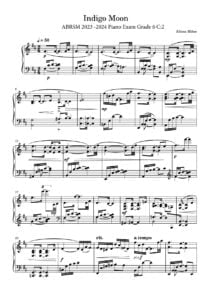 |
|
| ABRSM Piano Exam 2023-24 Jester’s Jig by Chee-Hwa Tan |
 |
|
| ABRSM Piano Exam 2023-24 Love Theme by Catherine Rollin |
 |
|
| ABRSM Piano Exam 2023-24 Minuet In G (Anonymous) |
 |
|
| ABRSM Piano Exam 2023-24 The Song Of Twilight by Yoshinao Nakada |
 |
|
| ABRSM Piano Exam Pieces Grade 1 2013 & 2014 syllabus |
 |
ABRSM Piano Exam Pieces Grade 1 2013 & 2014 syllabus |
| ABRSM Piano Exam Pieces Grade 1 2023 2024 |
 |
ABRSM Piano Exam Pieces Grade 1 2023 2024 |
| ABRSM Piano Exam Pieces Grade 1 2025 2026 |
 |
ABRSM Piano Exam Pieces Grade 1 2025 2026 |
| ABRSM Piano Exam Pieces Grade 2 2023 2024 |
 |
ABRSM Piano Exam Pieces Grade 2 2023 2024 |
| ABRSM Piano Exam Pieces Grade 3 2013 2014 |
 |
|
| ABRSM Piano Exam Pieces Grade 3 2023 2024 |
 |
ABRSM Piano Exam Pieces Grade 3 2023 2024 |
| ABRSM Piano Exam Pieces Grade 3 2025 2026 |
 |
ABRSM Piano Exam Pieces Grade 3 2025 2026 |
| ABRSM Piano Exam Pieces Grade 4 2021 2022 |
 |
ABRSM Piano Exam Pieces Grade 4 2021 2022 |
| ABRSM Piano Exam Pieces Grade 4 2023 2024 |
 |
|
| ABRSM Piano Exam Pieces Grade 5 2023 2024 |
 |
ABRSM Piano Exam Pieces Grade 5 2023 2024 |
| ABRSM Piano Exam Pieces Grade 6 2023 2024 |
 |
ABRSM Piano Exam Pieces Grade 6 2023 2024 |
| ABRSM Piano Exam Pieces Grade 7 2023 2024 |
 |
ABRSM Piano Exam Pieces Grade 7 2023 2024 |
| ABRSM Piano Exam Pieces Grade 8 2023 2024 |
 |
ABRSM Piano Exam Pieces Grade 8 2023 2024 |
| ABRSM Piano Exam Pieces Grade 8 2025 2026 |
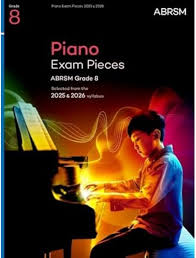 |
ABRSM Piano Exam Pieces Grade 8 2025 2026 |
| ABRSM Piano Mix 3 for Easy Piano Grades 3-4 |
 |
ABRSM Piano Mix 3 for Easy Piano Grades 3-4 |
| ABRSM Piano Prep Test |
 |
|
| ABRSM Piano Scales And Arpeggios from 2021 Guide For Practical Grades |
 |
|
| ABRSM Selected Piano Exam 2011 2012 Grade 1 |
 |
|
| ABRSM Selected Piano Exam Grade 2 (2011 2012 ) |
 |
|
| ABRSM Specimen Aural Tests Grade 1 to 3 |
 |
|
| ABRSM Specimen Aural Tests Grade 4 & 5 |
 |
|
| ABRSM Teaching notes on piano exam pieces (2013 & 2014) |
 |
|
| ABRSM The Manual Of Scales Broken Chords And Arpeggios For Piano |
 |
|
| ABRSM Theory of Music Exams Grade 8 (The Associated Board of Royal Schools of Music) 2010 |
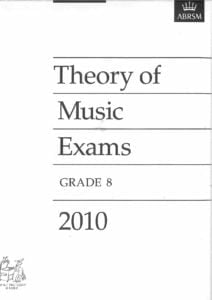 |
|
| AC/DC – Classic – Early Years – High Voltage And Let There Be Rock (Guitar Tab Songbook) |
 |
ACDC – Classic – Early Years – High Voltage And Let There Be Rock |
| AC/DC – Jam With AC/DC (PDF with MP3 audio tracks Guitar Tab Songbook) |
 |
Jam With ACDC |
| AC/DC Rock Score |
 |
|
| AC/DC, Best of (Guitar & Tablature) |
 |
Best Of ACDC (Guitar) |
| Ace Of Base – Beautiful Life | ||
| Ace Of Base – Dont Turn Around | ||
| Ace Of Base – Living In Danger | ||
| Acoustic 33 TOP Guitar Hits (Guitar Songbook) with Tablature – sheet music |
 |
Acoustic 33 TOP Guitar Hits (Guitar Songbook) – sheet music |
| Acoustic Blues Guitar By Kenny Sultan Guitar Tab |
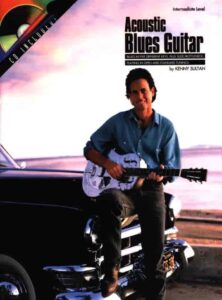 |
Acoustic Blues Guitar |
| Acoustic Blues Guitar Keith Wyatt with TABs |
 |
Acoustic Blues Guitar Keith Wyatt with TABs |
| Acoustic Blues Guitar Styles (Larry Sandberg) (with Tablature) |
 |
Acoustic Blues Guitar Styles (Larry Sandberg) |
| Acoustic Classics 42 songs Piano Vocal Guitar |
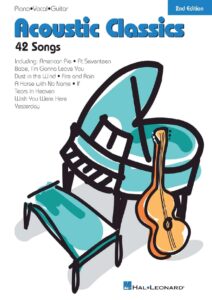 |
Acoustic Classics 42 songs Piano Vocal Guitar |
| Acoustic Guitar Bible (35 great songs) Guitar with TABs |
 |
Acoustic Guitar Bible (35 great songs) Guitar with TABs |
| Acoustic Rock (Guitar) Rolling Stones, Green Day, Pink Floyd, Bob Dylan (Songbook Guitar Tab) with Tablature |
 |
|
| Acoustic Rock 90’s, Best of – Guitar with Tablature |
 |
Acoustic Rock 90’s, Best of – Guitar |
| Acqua azzurra acqua chiara (Battisti) | ||
| Ad Te Levavi (Musescore File).mscz | ||
| Adagio (Lara Fabian) | ||
| Adagio MP3.zip | ||
| Adah’s Theme (La femme avec les yeux lumineux) Sex and the City |
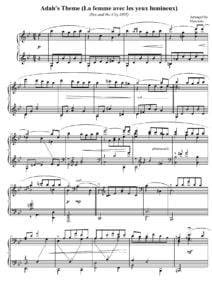 |
|
| Adah’s Theme (Le femme avec les yeux lumineux) Sex and the Cit | ||
| Adam – Adolphe Charles Holy Night Cantique-Nöel |
 |
|
| Adam – Cantique de Nöel Minuit Chretiens | Adam – Cantique de Noel Minuit Chretiens VS | |
| Adam – Derniers souvenirs d’un musicien |
 |
|
| Adam – O Holy Night | Adam – O Holy Night | |
| Adam – Souvenirs d’un musicien |
 |
|
| Adam (Cappeau) – Cantique de Noël. Easy Piano with voice or instrument (Paroles and lyrics) |
 |
Adam-Cappeau-Cantique-de-Noel- |
| Adam (Cappeau) – Cantique de Noel. Easy Piano with voice or instrument.mscz | ||
| Adam Cantique de Nöel Christmas song | Adam Cantique de noel | |
| Adam Carse – The History Of Orchestration Adam Carse |
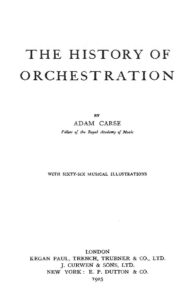 |
|
| Addams Family Theme (Musescore File).mscz | ||
| Addams Family Theme (Easy Piano) |
 |
|
| Addio Colonnello (Ennio Morricone) | ||
| Adele Songs from the Album 21 For SATB, SSA and Piano |
 |
Adele Songs from the Album 21 |
| Adele – 21 |
 |
ADELE 21 SONGBOOK |
| Adele – Chasing Pavements Piano Vocal guitar chords |
 |
|
| Adele – Easy on me (Piano solo with lyrics) |
 |
|
| Adele – Rolling in the Deep |
 |
|
| Adele – Rumor Has It |
 |
|
| Adele – Set Fire to the Rain |
 |
|
| Adele – Set Fire To The Rain (2) (Musescore File).mscz | ||
| Adele – Someone Like You | Adele – Someone Like You | |
| Adele – Someone Like You easy piano |
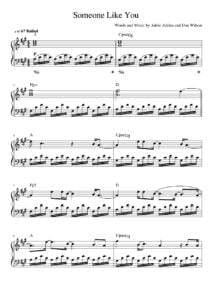 |
|
| Adele – The Best Of SongBook (12 songs arranged for easy piano) |
 |
Adele – The Best Of SongBook (12 songs arranged for easy piano) |
| Adele 19 [Piano, Guitar, Vocals] |
 |
Adele 19 [Piano, Guitar, Vocals] |
| Adele 25 Songbook |
 |
Adele 25 Songbook Contents —  |
| Adele Best Of Adele Big Note Piano (Adele Adkins) |
 |
Adele Best Of Adele Big Note Piano (Adele Adkins) |
| Adele Easy On Me Sheet Music |
 |
|
| Adele Original Keys For Singers (Adele) |
 |
Adele Original Keys For Singers (Adele) |
| Adele Skyfall (Piano Vocal Guitar Chords) | Adele Skyfall (Piano Vocal Guitar Chords) | |
| Adios Amor – Goodbye My Love as recorded by José Feliciano |
 |
|
| Adult All In One Course Level 1 With Audio Mp3 (Willard Palmer) |
 |
Lessons Alfred’s Basic Adult Piano Course Level 1 |
| Adult All In One Course Level 2 With Audio Mp3 (Willard Palmer) |
 |
Willard Palmer – Adult All-In-One Course Level 2 |
| Adult Greatest Movie Hits Piano Level 1 |
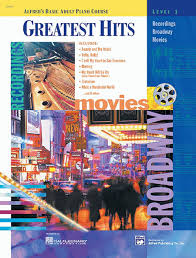 |
Adult Greatest Movie Hits Piano Level 1 |
| Adult Piano Adventures ALL-IN-ONE PIANO COURSE 1 |
 |
|
| Adult Piano Adventures All-In-One Piano Course Book 2 Book With Media Online (Nancy Faber, Randall Faber) Sheet Music |
 |
|
| Adult Piano Adventures Christmas – Book 1 (Nancy Faber Randall Faber) |
 |
|
| Adult Piano Adventures Christmas – Book 2 |
 |
Adult Piano Adventures Christmas – Book 2 |
| Adult Piano Adventures Popular Book 1 – Timeless Hits and Popular Favorites (Adult Piano Adventures Popular) |
 |
Adult Piano Adventures Popular Book 1 – Timeless Hits and Popular Favorites (Adult Piano Adventures Popular) |
| Adult Piano Course Greatest Movie Hits Piano Level 1 Recordings Broadway Movies |
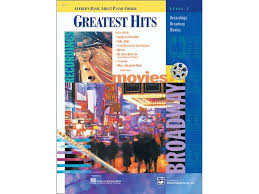 |
Adult Piano Course Greatest Movie Hits Piano Level 1 Recordings Broadway Movies |
| Advanced Harmonic Concepts by Wayne Naus (with audio MP3) |
 |
Advanced Harmonic Concepts by Wayne Naus |
| Advanced Harmonic Exercises For Jazz Piano |
 |
advanced harmonic exercises |
| Advanced Piano Solos 1 Encyclopedia by Tom Roed |
 |
Advanced Piano Solos 1 Encyclopedia by Tom Roed |
| Advanced Piano Solos 2 Complete by Tom Roed |
 |
Advanced Piano Solos 2 Complete by Tom Roed |
| Advanced Sacred Music Piano Solos by John Kraus |
 |
|
| Advanced Scale Concepts and Licks for Guitar (PDF + MP3 audio tracks Play Along) with Tablature |
 |
 |
| Aebersold – 110 – When I fall In Love – Romantic Ballads pdf with embedded audio MP3 Tracks |
 |
Jazz Play Along Vol 110 [When i Fall in Love] |
| Aebersold – 113 Embraceable You – Vocal Standards with audio MP3 Tracks |
 |
Jamey Aebersold – Vol 113 |
| Aebersold – 30 blues scale By Jamey Aebersold | Aebersold – 30 blues scale By Jamey Aebersold | |
| Aebersold – A New Approach To Jazz Improvisation Gettin’it together vol. 21 |
 |
aebersold gettin all together vol 21 |
| Aebersold – Practice Procedures For Memorizing Scales And Chords | Aebersold – Practice Procedures For Memorizing Scales And Chords | |
| Aebersold – Rapid Reference Vol 1-114 | Aebersold – Rapid Reference Vol 1-114 | |
| Aebersold – Vol 01 – How to Play and Improvise Jazz (with audio MP3) |
 |
Aebersold – Vol 01 – How to Play and Improvise Jazz |
| Aebersold – Vol 03 – The II-V7-I Progression Jazz Play Along Book + Audio Mp3 |
 |
|
| Aebersold – Vol 105 – Dave Brubeck Jazz Play Along Book + Audio Mp3 |
 |
|
| Aebersold – Vol 118 – [Groovin Jazz] (with audio MP3) |
 |
|
| Aebersold – Vol 32 – Ballads Jazz Play Along Book + Audio Mp3 |
 |
|
| Aebersold – Vol 34 – Jam Session Jazz Play Along Book + Audio Mp3 |
 |
Includes MP3 Play along themes as Blue moon, The shadow of your smile, Over the rainbow, etc. |
| Aebersold – Vol 45 – [Bill Evans] Jazz Play Along Book + Audio Mp3 |
 |
Aebersold – Vol 45 – [Bill Evans] |
| Aebersold – Vol 58 – Unforgettable Standards Jazz Play Along Book + Audio Mp3 |
 |
aebersold unforgettable standards sheet music |
| Aebersold – Vol 76 – David Baker – How To Learn Tunes (A Jazz Musician’s Survival Guide) |
 |
how to learn tunes |
| Aebersold 25 How To Practice By Jamey Aebersold | Aebersold 25 | |
| Aebersold Antonio Carlos Jobim Vol 98 – Bossa Nova Songbook Jazz Play Along Book + Audio Mp3 |
 |
Aebersold Antonio Carlos Jobim Vol 98 – Bossa Nova Songbook |
| Aebersold Anyone Can Improvise – 52 Points To Remember | Aebersold Anyone Can Improvise – 52 Points To Remember | |
| Aebersold Jazz EAR training (with audio MP3) |
 |
Aebersold Jazz EAR train |
| Aebersold Jazz Handbook 09 Tips For Learning A New Tune & Practice Procedures For Memorizing |
 |
Aebersold Jazz HANDBOOK |
| Aebersold Jazz Play-Along Books & audio MP3 1st Part Full Collection – Vol 1- 40 (with MP3) for all instruments |
Compressed file  Aebersold Full Collection Part 1 – Vol 1- 40 Aebersold Full Collection Part 1 – Vol 1- 40 |
40 volumes with MP3 Aebersold Book Index Vol.001-106 |
| Aebersold Jazz Play-Along Books & audio MP3 2nd Part Full collection Vol 41- 75 for all instruments | Compressed fileAebersold Full Collection Part 2 – Vol 41- 75.. | 35 volumes with MP3 Aebersold Book Index Vol.001-106 |
| Aebersold Jazz Play-Along Books & audio MP3 3rd Part Full Collection – Vol 76- 112 (with MP3) | Compressed fileAebersold Full Collection Part 3 – Vol 76- 112 | 37 volumes with MP3 Aebersold Book Index Vol.001-106 |
